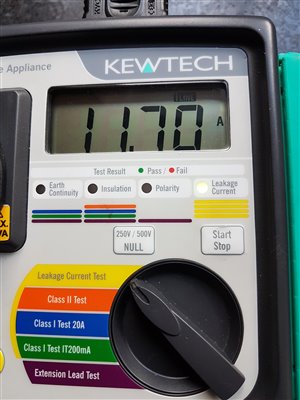This sounds an overly simplistic question, and the obvious answer is of course 13 amps. There is a clue in the name you know.
However in the case of a simple resistive load, the current will increase at a higher supply voltage. So at what voltage is the current measured for approval purposes ?
At 230 volts, the nominal or declared voltage ?
At 240 volts, the average voltage actually supplied most of the time in most places ?
Or at 253 volts, the maximum permitted. Or even at 256 volts the maximum achieved in an outbuilding with a bit of voltage rise due to grid tied PV on the roof.
The question has arisen due to a number of brand new "fast boiling" domestic electric kettles of reputable make failing a third party PAT test due to "excessive current"
I repeated the test with my PAT tester and achieved a similar result, FAIL in the premises in which they are to be used, but "pass" if tested elsewhere.
Tests with a variac and calibrated ammeter showed that a cold kettle on a 250 volt supply uses nearly 14 amps. just under 13 amps at 230 volts, both figures declining a little as the water starts to heat.
Had I done the original testing, I would have been inclined to use a little common sense and discretion and to pass an appliance that uses less than 10% overcurrent for a few minutes.
I would not pass an appliance such as a space heater that used even a slight overcurrent for hours at a time.
Wondered what others think.
And whilst we are on the subject, what about large portable air conditioners ? Available to hire fitted with 13 amp plugs, they appear to be a constant wattage load and use nearly 15 amps if the supply voltage is very low, and almost exactly 13 amps at 240 volts.


